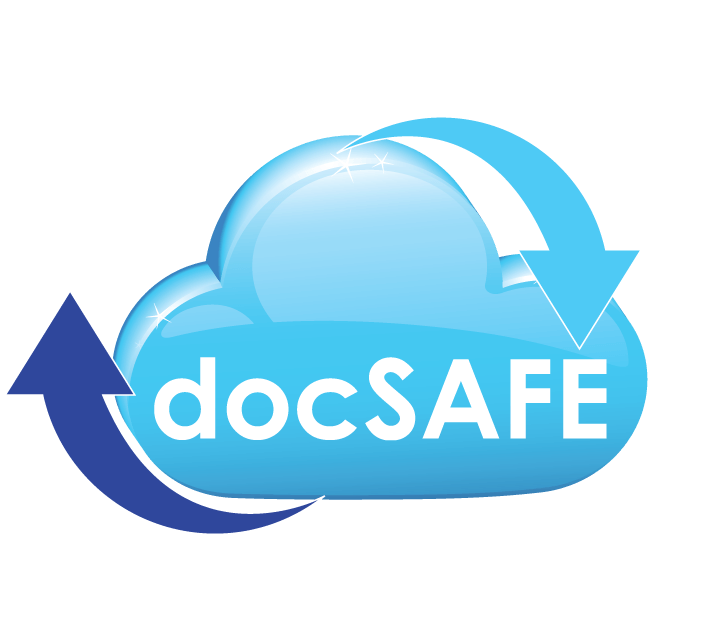Digital marketing for accountants: jargon busting
Occasionally one of our accountancy clients will ask us to stop for a second and explain a word or phrase we've used. That made us think about the jargon we use and prompted us to put together this glossary.This guide was created by the whole PracticeWeb team working in collaboration.
When you’re a specialist, it’s easy to forget that the words, phrases and jargon you use every day aren’t universally understood.
Accountants know this, of course – there aren’t many professions with more dense technical language – but this was brought home to us recently when a client asked us to explain (a) what SEO means and (b) what a blog is. As experts in marketing for accountants, we live and breathe this kind of thing, but that’s not true for everyone.
At PracticeWeb, we tend to think that if a question has been asked once, there are probably lots of people out there wondering the same thing, so we got our heads together and had a think about every bit of jargon we’ve had clients query.
This glossary is intended to help those who, though they might be expert accountants, don’t know much about marketing or communications.
Some of it you’ll already know, other bits you might have thought you knew and some, we hope, will answer questions you’ve been too embarrassed to ask.
Where we can, we’ve linked to a resource with more detailed information.
We’ll keep updating it as new items crop up. In the meantime, feel free to drop us a line if there’s a term you’re confused about, or get in touch to talk about how we can help your accountancy firm with its digital marketing.
Digital marketing glossary
Architecture | How the information on your website is structured, including hierarchy and connections. It may or may not be reflected in the site navigation.
AdWords | The previous name for Google Ads, Google’s online pay-per-click advertising platform, which delivers paid-for results alongside organic search results. The basis of most PPC campaigns.

Adwords and SEO.
Back-end | The settings, code and technology that lie behind user interfaces, usually invisible to end users.
Blog | Short for ‘web log’. Blogs (noun) are run by bloggers who engage in blogging (verb). A blog is a regularly updated stream of topical content and commentary – anything from a personal diary to a company information feed. Here’s PracticeWeb’s blog.
Blog post | An individual entry on a blog. An article, essentially.
Bounce rate | The volume of visitors to your website that navigate away after viewing only one page – that bounce straight off.
Brand | The unique personality and values of a business expressed through, and informing the development of, written content, web design, graphics and so on.
Buyer journey | The steps a potential customer or client goes through before making the final decision to sign-up for goods or services. Our free complete guide to marketing plans for accountants has more on this.
Campaign Monitor | One of the main email marketing platforms used by businesses worldwide to manage client newsletters and email campaigns. See also: MailChimp.
Canonical link | To avoid duplicate content where the same material appears on more than one website, or more than once on the same website, it is possible to specify in the back-end which version you’d prefer search engines to index.
Clickbait | A post or article with a deliberately provocative or intriguing title designed to encourage users to click through. Rarely used on accountancy websites.
Click-through-rate (CTR) | A ratio expressing how often those who see your ads online end up clicking on them, used to assess the performance of ads and keywords. It equates to the number of clicks your ad receives divided by the number of times your ad is shown.
Content | Words, images, eBooks, video and anything else that make up the substance of your website.
Content management system (CMS) | An easy way for website owners to add and edit content without technical knowledge, often using some form of WYSIWYG interface. Most good website platforms use some form of CMS these days, as opposed to the old-fashioned approach whereby requests for even simple text changes generally had to be made to the website developer.
CTA | Call to action – an instruction given to website users indicating what you want them to do next. “Pick up the phone now” is a typical CTA.

Calls to action
CTR | See click-through rate.
DNS | Domain name system. A global system for identifying computers, services and anything else connected to the Internet used, most importantly, to ensure that when users enter an easy-to-remember website address such as practiceweb.co.uk, they get taken to the right place.
Display advertising | Paid-for adverts that appear on commercial websites, typically in the form of banners at the top of the page or breaking up the content.
Domain name | See DNS.
Duplicate content | Written material that appears in exactly the same form on more than one website, or on multiple pages on the same website. As long as only one version is indexed, or a canonical link has been specified, it’s not necessarily bad news but otherwise can seriously damage your search ranking.
GIF | An image file format designed to reduce file size for use online. Most often used for graphics, logos and illustrations rather than photographers. GIFs can also be animated which has made them popular on social media. Pronunciation is highly controversial but we prefer ‘giff’ to ‘jiff’.
Google Ads | The previous name for Ad Words.
Google My Business | Google’s free directory that plays a key role in your business’s online listing.

Google My Business.
Google penalty | Certain practices or attributes can prompt Google to penalise your website, pushing it far down the search results, or removing it from the index altogether.
House style | A technical aspect of branding governing the specific details of writing – should you start sentences with ‘and’ or ‘but’? Does your firm spell it ‘cash flow’ or ‘cashflow’? And so on.
Horizon | PracticeWeb’s platform for building websites.
HTML | Hypertext markup language. It uses tags to define how content displays on a web page.
HTML title | Text defined with the title tag in HTML will show in your web browser’s title bar or the name of a tab. Title tags also define what will be displayed in search engine results as the headline which people click on to visit the page. HTML titles are important for SEO.
Index | Search engines such as Google maintain a vast map of all the pages they scan, rank and might potentially return in search listings. Website owners can request that certain pages be no-indexed.
Internal links | Links that go from one page to another page on your website.
JPG | Or Jpeg, pronounced Jay-peg. An image format that uses an algorithm to remove unnecessary detail to reduce the file size. Most photographs you view online will be in JPG format.
Keywords | Words or phrases that succinctly convey what your content is about and which will, ideally, correspond with what users are searching for online.
Landing page | A special page set up to serve a particular marketing campaign, allowing easy tracking of the effectiveness of, say, pay-per-click advertising, and the measurement of return on investment.
Lead generation | Sometimes rendered ‘lead gen’. Identifying and engaging potential new clients – common objective for accountancy websites.
Listicle | An item of content in the form of a list, eg ‘The 27 top Xero hacks that will revolutionise your life’. (Often also clickbait.)
Local citations | An online reference to your business relating to a particular location, such as via Google my Business.
Long-form content | Articles or blog posts of substantial length – at least 1,000 words, ideally more – on which Google places particular value.
MailChimp | One of the world’s biggest email marketing platforms used by many businesses to design and manage newsletters and campaigns. See also: Campaign Monitor.
Metadata | Information about what a given web page includes and covers that, among other functions, helps search engine algorithms work out how to classify and rank your website.
Meta description | A short snippet of around 155 characters summarising the contents of a web page, included with HTML tags, but not visible on the page to users. It may be used by search engines in displaying results.
Mobile-first indexing | This refers to Google’s general practice of looking at the mobile version of a web page rather than the one that displays on desktop PCs. If your page doesn’t render well on mobile devices, it may not rank well, regardless of how good it looks on desktop machines.
Mobile-responsive | Websites that are specifically designed for smartphones or tablets.
Newsfeed | Superficially similar to a blog but with a focus on factual information. PracticeWeb supplies many clients with a flow of daily news stories which appear in the newsfeed on their websites. Because it’s generic, this content is no-indexed.
No-index | Content which may be viewable by users on your website but which is not included in a search engine’s index. There’s no way to guarantee a page won’t be indexed but you can include a request to search engines to ‘no-index’ in the code for your website. You might want to do this if, for example, a page duplicates content from elsewhere on your site which might otherwise hurt your search engine ranking.
Organic search results | Google returns two types of results in response to searches: ads and organic results. The latter have ranked because of their inherent qualities as assessed by Google search algorithms.
Organic traffic | Visits to your website by people who have found it through organic search results.
Pay-per-click | See PPC.
Persona | Buyer personas, or user personas, are a way of thinking about target clients that makes strategic decision making easier, by prompting you to focus on a specific imaginary user, not a broad demographic.
Podcast | Content in audio format, like a radio programme but available to download and listen to at any time. Podcasts have been around since the mid-00s but really took off in the past five years. Our sister business, AccountingWEB, has a weekly podcast called No Accounting for Taste.

Podcast.
PNG | An image format used to reduce the size of files for use online. Most commonly used for graphics, logos and illustrations, rather than photographs. Similar to GIF but generally considered superior in 2019.
PPC | ‘Pay Per Click’ is a model of internet marketing in which advertisers pay a fee each time one of their ads is clicked.
SEM | Search engine marketing – the collective term for PPC, SEO and related practices.
SEO | Search engine optimisation. The practice of tweaking content and website settings to encourage Google to present your website higher in search results.
SERP | Search engine results page. What you see in response to a query entered into Google.
Service page | A page on an accountancy firm’s website giving details of a specific service or product. These aren’t unique to accountancy firms but are especially important for SEO in the accountancy sector.
Social media | Facebook, Twitter and LinkedIn are all examples of social media, designed to facilitate fast, informal sharing of media with followers or friends. Our beginner’s guide to social media for accountants provides a great overview.

Social media apps.
Tags | HTML tags define how your web browser should format and display the content but are not shown to users. These days, most people edit using WYSIWYG and never have to use tags. Tags are also used to contain metadata.
Tone of voice | How you want to address your audience online. An aspect of branding relating to house style.
Unindexed | See no-index.
UX | User experience – how a user feels, reacts and behaves while using a website.
Values | Statements that summarise neatly what a business or brand is about and act as an anchor for any marketing activity, even if they’re never stated outright.
Website | A set of related pages or other content, usually under a shared domain name, published online.
White-label content | Content produced by PracticeWeb that clients use or share under their own accountancy practice’s name or brand.
WordPress | A content management system designed initially for blogging but now used to power all sorts of websites. Our product Horizon is built on WordPress.
WYSIWYG | ‘What you see is what you get’, referring to website editing software that allows you to work on something that resembles the final output rather than having to work with back-end code or HTML. PracticeWeb’s Horizon platform uses a WYSIWYG text editor for blog posts, based on WordPress, and also an optional WYSIWYG page editor so clients can easily make changes to their website even without technical training.




